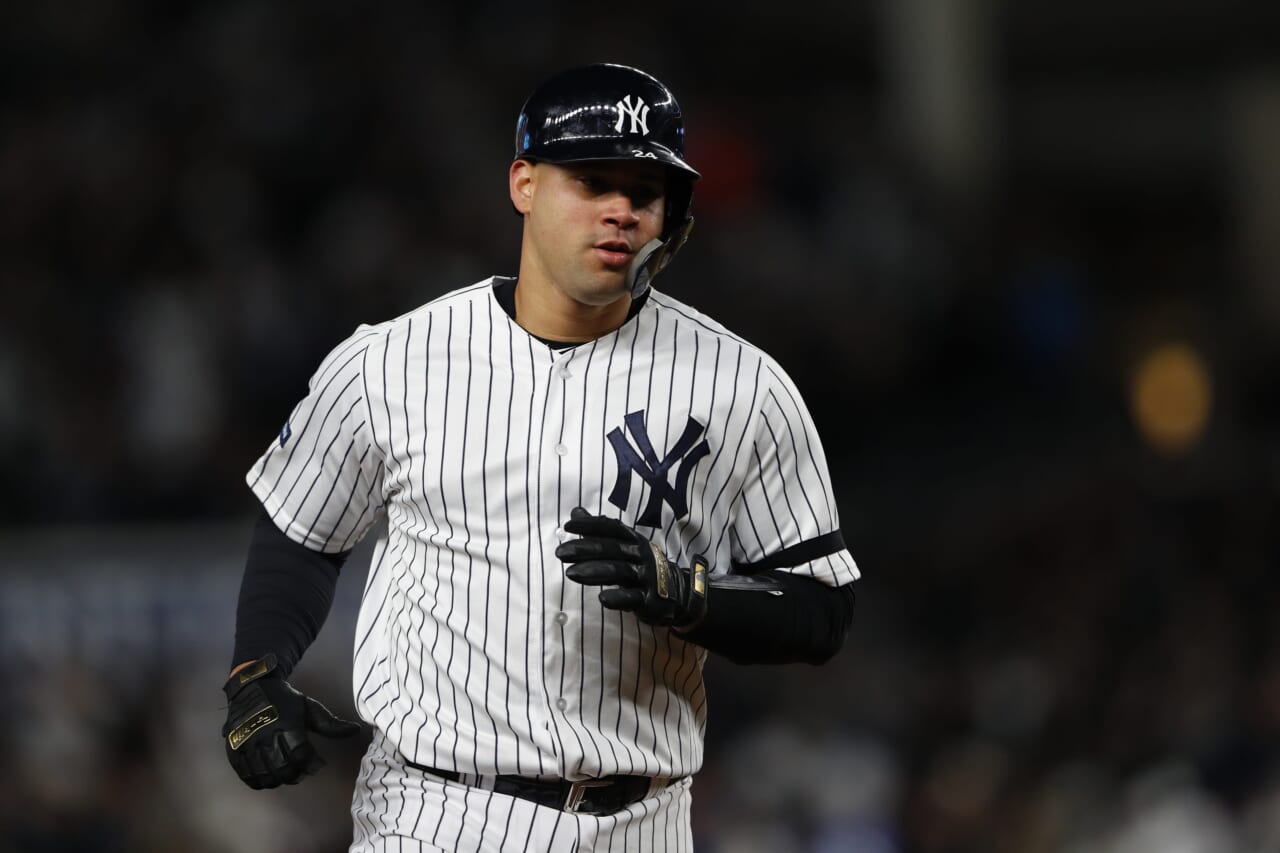
After years of flirting around the 1.00 mark in the GB/FB department (meaning he always had at least as many groundballs as fly balls) New York Yankees‘ catcher Gary Sanchez morphed into a full-on flyball hitter, with a 0.67 GB/FB ratio.
While that recipe is usually good for home runs (more flies equals more dingers) batting average usually suffers, especially when the batter is as slow as Sanchez (23rd percentile sprint speed.)
As a result, his batting average dipped to .232 and his BABIP (batting average in balls in play, which excludes plays such as walks, strikeouts and homers) was a paltry .244. He had a career-high 34 taters, though, in only 106 games.
Yes, he struck out a lot (28 percent, a career worst) but I believe that the Yankees’ backstop can see his batting average rise without sacrificing much power, because of a single, encouraging stat.
According to Baseball Savant, which feeds from Statcast data, Gary Sanchez led the Major Leagues in Barrel% with 19.1. He had 52 barrels last season, and as the New York Yankees can tell you, he did plenty of damage on them.
Explaining barrels and why the Yankees’ star should up his BA
To get you a bit more familiarized with the subject at hand: Per MLB.com, A “barrel” is defined as a “well-struck ball where the combination of exit velocity and launch angle generally leads to a minimum .500 batting average and 1.500 slugging percentage.”
The “barrel zone†starts at an exit velocity of 98 mph with a launch angle between 26 and 30 degrees. Balls hit with a lower launch angle can also be considered barrels, but anything higher than 30 will likely be a fly ball to the outfield or, even worse, a popup.
A ball struck at 100 mph with a 25 degrees angle will travel far. It will likely be a home run or a double. Sanchez barrels lots of balls, so all he needs is health, consistency, and trim that strikeout rate a little, preferably under the 25 percent threshold, to reach .260 or .270, which would be a fantastic outcome with all the power he has.
No, Sanchez probably won’t hit .300. He won’t even approach .290 or .290 in all likelihood. However, given that he frequently hits the ball hard and in the air, I believe he can overcome contact and speed issues to break the .260 barrier for the first time since 2017.